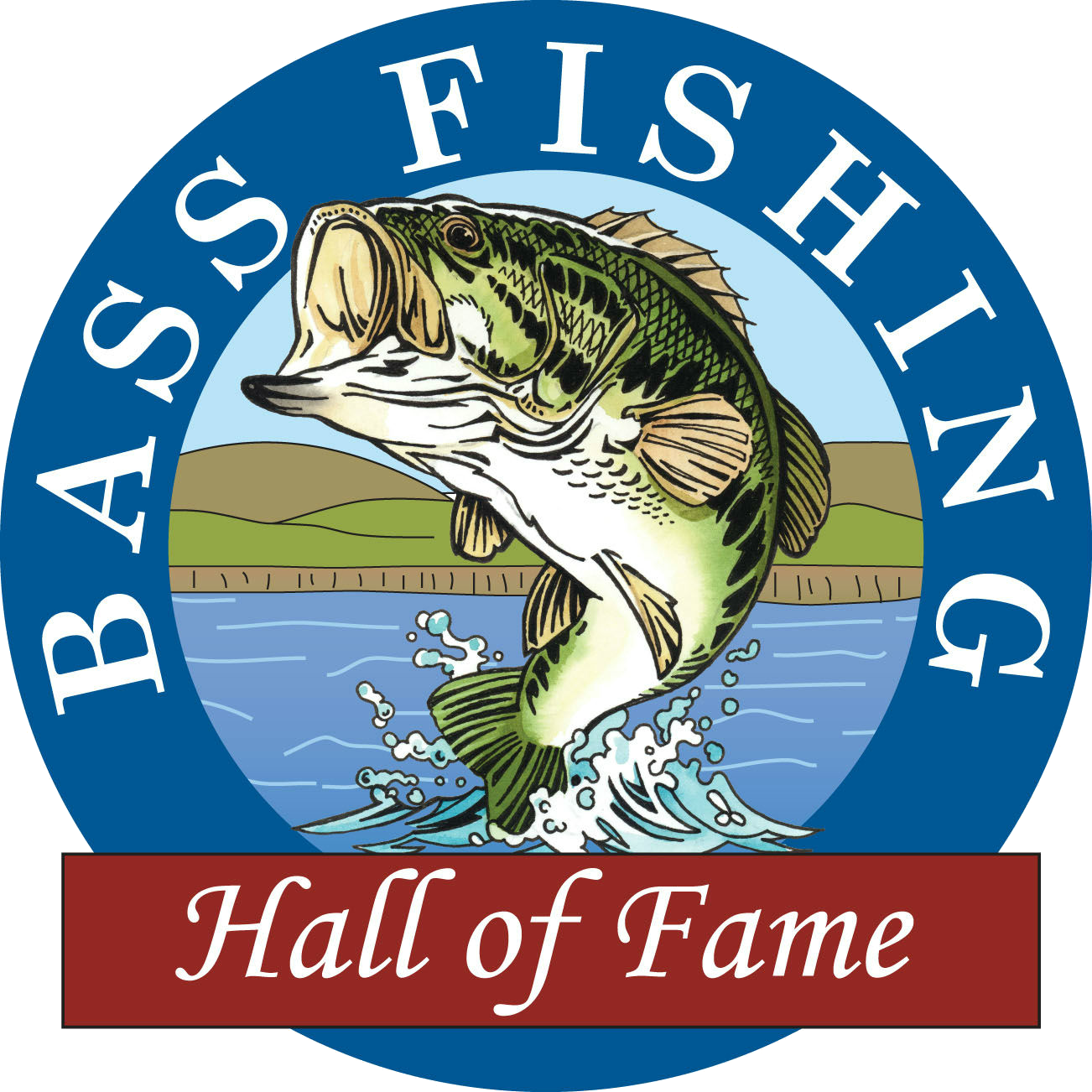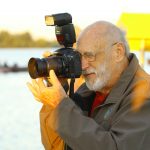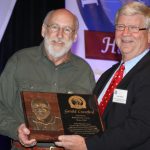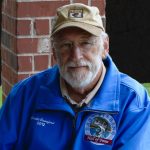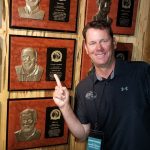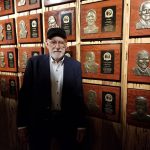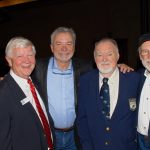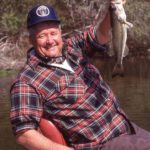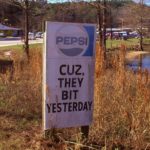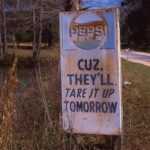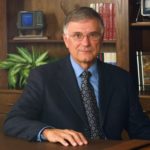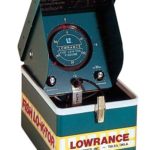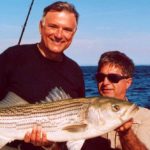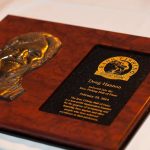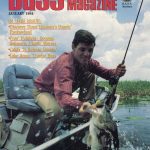Gerald Crawford
Gerald Crawford — In his nearly 50 years as a professional photographer, Gerald Crawford traveled to many of the world’s most scenic destinations, photographed two future presidents and several movie stars and provided scores of magazine cover photos. But his greatest satisfaction, he said, came while photographing professional bass anglers and “knowing that I was able to bring the fans closer to their heroes.”
He did that regularly during a 28-year span in which he covered more than 400 bass fishing tournaments along the Bassmaster Tournament Trail.
Known simply as “Crawford” by his legions of friends and fans, James G. Crawford was born in 1940 on a farm in Houston County, Alabama, where his parents were sharecroppers growing cotton and peanuts.
He attended high school in Birmingham and went to work after graduation in the mail room of The Progressive Farmer Magazine. Activated into the Alabama Air National Guard’s Tactical Reconnaissance Group, Crawford was assigned to photography at Lowery Air Force Base in Denver, Colorado. That experience landed him a promotion to photographer at Progressive Farmer. When the magazine launched a new publication, Southern Living, in 1965, he became its first chief photographer.
As a travel photographer in 1979, Crawford covered the Bassmaster Classic at Lake Texoma, on the Texas-Oklahoma border, and he began shooting B.A.S.S. tournaments full time beginning with the 1980 Classic at Thousand Islands, New York.
First as a freelancer and from 1989 through 2007 as a full-time employee of B.A.S.S., Crawford recorded images of many of the major milestones in bass fishing history, including record catches, innovations such as pro/am competitions and the debut of anglers who would become superstars — with no small amount of help from his photos. The 1984 Classic, when future presidents George H.W. Bush and Bill Clinton shared the weigh-in stage with champion Rick Clunn, was one of his most memorable assignments.
He earned the respect of anglers by spending all day, every tournament day in his photo boat — in the nastiest of weather — capturing on-the-water action with his trusty Nikons.
He was a one-man photo crew in qualifying tournaments, but he enlisted help from others, including his friend, Charles Beck of Birmingham, for the Classics. In those events, the two would shoot from before dawn through the weigh-ins each afternoon, and then stay up late at night processing black-and-white photos in a makeshift darkroom set up in their hotel bathrooms.
Crawford won the Southeastern Library Association Award and the 1980 Graphic Arts Award for his work with Southern Living, and his photos have illustrated more than 10 books in addition to numerous books published by B.A.S.S.
“At B.A.S.S. we had a special spirit of creativity and there were no limits on where you could go with it,” Crawford said in an interview for Bassmaster.com. “I worked with great people whose passion was serving the members and doing our best to document some pretty neat events in the sport of bass fishing.”
Without cell phones or the angler tracking technology in use today, Crawford had to use instinct and ingenuity to be in the right place on the water at the right time. “It was challenging, but we always found a way to capture the important catch, to photograph the winning moments,” he said.
- with Dave Precht, Steve Bowman and Bob Cobb
Gerald Crawford
Jack Wingate (1929-2011)—Revered as the “Sage of Seminole,” Jack Wingate started out in the fishing business during Harry Truman’s presidency. He was a tireless promoter of Lake Seminole, a big bass factory on the Georgia/Florida border. As the owner of Wingate’s Lunker Lodge, he attracted the most talented anglers from within a day’s drive of the legendary reservoir near Bainbridge, Georgia.
Wingate kept a card file on those regular customers, and when Ray Scott contacted him for referrals of top anglers to compete in his first bass tournament in 1967, Jack generously shared their names and contact information. When the first All American Bass Tournament got underway on Beaver Lake, Arkansas, in June 1967, 22 of the 106 competitors were Wingate’s customers. Wingate himself fished the landmark event, which marked the birth of competitive bass fishing, finishing in the Top 10.
After a brief flirtation with life as a bass pro, Wingate settled back down as lodge owner, fishing guide and family man. Working with local tourism officials, he arranged to host one of Scott’s first fishing derbies on Lake Seminole. The Seminole Lunker Bass Tournament was the first to be held after Scott founded the Bass Anglers Sportsman Society (B.A.S.S.), and it drew 150 anglers from 15 states. Wingate — smiling broadly and holding up two lunker bass from Seminole — was the cover model for the second issue of Bassmaster Magazine.
Wingate devoted his life to helping others learn to love fishing. In 1966, he founded Wingate’s Fishing Camp for Boys at Lake Seminole. For more than three decades, he and his staff taught thousands of youngsters all about bass fishing, fly fishing, gun safety, boat handling, Native American lore and conservation ethics. “I never made a cent off of it,” he once told a writer, “but by God I had a good time. I wouldn’t trade it for nothing.” He added, “You ain’t never seen an excited face until you’ve seen a kid catch his first bass.”
Born September 1, 1929, in Faceville, Georgia, Wingate grew up on ground that eventually was flooded by George Woodruff Dam to impound Lake Seminole. He died in 2011 and was inducted posthumously into the Bass Fishing Hall of Fame the following year. He had previously been inducted into the Legends of the Outdoors Hall of Fame, and he was named a “Legendary Guide” by the Freshwater Fishing Hall of Fame in Hayward, Wisconsin. Shortly before his death, he said, “My only wish is that I had more time on this earth to teach more young people the sport of just fishin’.”
Customers visiting Wingate’s Lunker Lodge during that era will remember the pair of signs at the entrance to the property. The one at the entrance read, “Cuz, They Bit Yesterday.” At the exit, the other sign said, “Cuz, They’ll Tare It Up Tomorrow” — typical homespun humor from Jack Wingate.
Jack Wingate
As an avid skin diver, Darrell Lowrance learned much about the schooling habits and preferred locations of freshwater fish. Along with his father, Carl, and brother, Arlen, he set out to design a portable electronic device that would help fishermen and boaters determine depth of the bottom and other underwater objects. The famous ‘Little Green Box’ was introduced in 1959 and it revolutionized bass fishing. As president and CEO of the Lowrance company, Darrell was responsible for many breakthroughs in marine electronics, including the first sonars capable of high-speed performance (1965), the first graph recorder (1974), the first integrated sonar/GPS unit (1995) and many others. During 1983 and 1984, Lowrance served as president of the American Fishing Tackle Manufacturer’s Association (AFTMA), and was also director of the National Association of Marine Products and Services 1989. Lowrance retired in 2007 following the company’s acquisition by Navico.
Mr. Lowrance passed away at the age of 80 in March 2019
- The FISH LO-K-TOR is one of the most prolific sonar devices ever produced, with over 1 million sold from 1959 to 1984
Darrell Lowrance
Mike Folkestad, who makes his home in Orange, Calif., is nothing short of a fishing legend, although his name isn’t widely recognized outside of his native West Coast domain. However, he did fish back East in Bassmaster Invitationals in the late 1980s and later fished the Top 100s in the early ’90s. Folkestad’s accomplishments in the West are vast and unmatched. He’s a three-time WON Bass U.S. Open champion with back-to-back victories in 2001-02. He holds major titles in all western circuits including WON Bass, EverStart, Western Bass, B.A.S.S., West Coast Bass and US Bass. He’s fished one Bassmaster Classic and one Forrest Wood Cup. He holds the Bassmaster Invitational record for lowest winning weight, which he set at the Harris Chain in 1992 with a total weight of 14-10. And he’s not done. In March 2010 he set a new Lake Havasu all-time one-day weight record of 26.63 pounds.
Mike Folkestad
Blake Honeycutt (1929 – 2022) Most fans remember Honeycutt of Hickory, N.C., as the holder of the all-time heaviest winning weight in a B.A.S.S. tournament – 138 pounds, 6 ounces at the 3-day Eufaula National in July 1969. A standout angler in the seminal years of the sport, Honeycutt qualified for three Bassmaster Classics and ranked in the top-20 in half the events he entered. But his contributions to the sport run much deeper. As a teenager, he helped Buck Perry test, design and market Perry’s Spoonplugs. Honeycutt later partnered with Tom Mann and Yank Dean to launch Humminbird. As the East Coast rep for Ranger Boats for 20 years, Honeycutt also helped design layouts for the Ranger TR series and developed an electric anchor for bass boats. Like his mentor, Buck Perry, Honeycutt is considered one of the fathers of structure fishing.
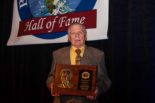
Blake Honeycutt
Doug Hannon (1947 – 2013)— Big-bass angler, bass conservationist and inventor Doug Hannon was known throughout the bass fishing world as “The Bass Professor.” Hannon was born in Canada and moved to the U.S. at age 7. While an undergraduate in psychology at Tulane University in New Orleans, Hannon visited the Texas ranch of his girlfriend’s (and future wife’s) family, where he went bass fishing for the first time. It proved to be a life-changing experience — Hannon became so fascinated with bass that immediately after graduating, he moved to Florida, which in the early 1970s was the big bass capitol of America.
Here, thanks to a trust fund provided by his late father, Hannon, freed from financial constraints, embarked upon his quest to learn all he could about big bass and how to catch them. He began by interviewing Florida’s leading big bass anglers, many of them reclusive loners, and from them gained inside knowledge about the haunts and habits of the Sunshine State’s giant bass.
Hannon next began guiding for big bass on a catch-and-release-only basis. His notoriety grew quickly after journalist Frank Sargeant, impressed both by Doug’s prowess at catching lunkers and his in-depth knowledge of bass behavior, dubbed Hannon “the Bass Professor” in his Tampa Tribune outdoor column. By the mid-’80s, Hannon had caught and released over 500 bass weighing 10 pounds or more, and had become nationally renowned through frequent articles in Bassmaster and other fishing publications. Hannon’s quirky personality and nature-based approach to bass fishing stood in stark contrast to the braggadocio and “run-and-gun” style of many tournament anglers of the day.
He realized that a stealthy approach was necessary for catching giant bass from Florida’s shallow and highly-pressured lakes and rivers, so he did most of his fishing from a 16-foot aluminum boat with a 40-horsepower outboard – a far cry from the fast and flashy fiberglass bass boats booming in popularity at the time. Hannon’s boat typified his iconoclastic approach to bass fishing. He painted it in camouflage colors so it would blend in, rather than stick out, from the Florida bass’ clear, shallow environment. Its lack of raised casting decks allowed Hannon to maintain the lowest possible profile so as to not alert wary lunkers to his presence, and its up-front stick steering allowed him to thread his way through vast untapped expanses of weed-choked bass habitat. Hannon knew that big bass and hordes of people don’t mix; he caught most of the 800-plus giants he logged during his career, including a 17-pound largemouth, from small, remote lakes and rivers, many lacking even rudimentary launch ramps.
Hannon spent thousands of hours on the water by himself, fine-tuning not only his angling skills but also his prowess as a diver and underwater photographer.
Blessed with an innate talent for invention, Hannon held nearly 20 patents for fishing-related innovations, including the first truly weedless trolling motor propeller and the popular MicroWave bass rod guide system. He was arguably the earliest proponent of catch and release of big bass and used his magazine articles as a bully pulpit to stress the enduring value of photographing and releasing these superior fish verses killing them and displaying them as a mounted trophy. Hannon built a large bass research tank in his backyard and worked with tournament organizers including B.A.S.S. to develop livewell potions formulated to reduce the mortality of released bass. He authored and co-authored several books on bass fishing, and his “Bass Professor” segment was a popular component of “The Bassmasters” television program. Hannon died in March 2013 at the age of 66.
